Stem Cell Therapy in United Arab Emirates
Search and Compare the Best Clinics and Doctors at the Lowest Prices for Stem Cell Therapy in United Arab Emirates
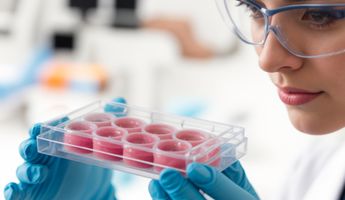
Find the best clinics for Stem Cell Therapy in United Arab Emirates
No clinics available
Malaysia offers the best prices Worldwide
Price: $ 530

- Home
- United Arab Emirates
Compare Before & After Photos of _procedure_photos.phpStem Cell Therapy
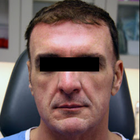
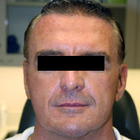
Front view
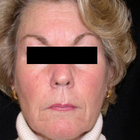
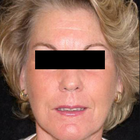
Front view
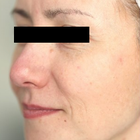
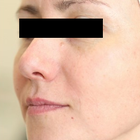
Half-side view
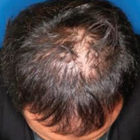
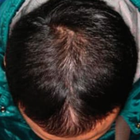
Front view
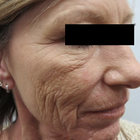
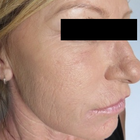
Half-side view
WHY US?
At Medijump, we're making medical easy. You can search, compare, discuss, and book your medical all in one place. We open the door to the best medical providers worldwide, saving you time and energy along the way, and it's all for FREE, no hidden fees, and no price markups guaranteed. So what are you waiting for?

Free

Best Price

Widest Selection

Risk-Free
What you need to know about Stem Cell Therapy in United Arab Emirates
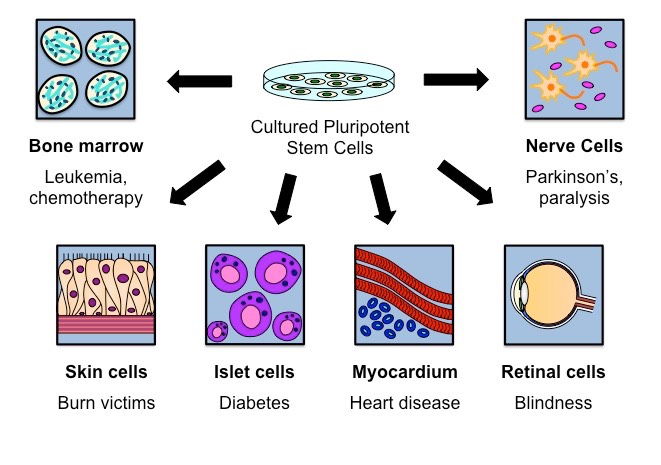
Stem Cell Therapy involves the use of stem cells to treat different diseases. These are non-differentiated cells of a multicellular organism. All the cells in the body are specialized for a specific function but they are the only cells without an assigned function. They can differentiate into any type of cell as and when required by the body and can proliferate rapidly to produce multiple copies of a specific type. Sources of stem cells are embryos and adult body tissues. In the adults, stem cells are present in bone marrow, brain, liver, skin, skeletal muscles, blood and blood vessels. While embryonic stem cells are derived from a blastocyst. Nowadays, the Umbilical cord is being stored under suitable conditions to get stem cells from it if needed. This is useful as chances of transplant rejection are less because stem cells are derived from your own umbilical cord.
Bone Marrow Transplant is the most commonly used method to treat various types of cancers such as lymphoma, multiple myeloma, and leukemia, etc. through stem cells. It is also used to treat brain diseases, cardiovascular diseases and cell deficiencies such as diabetes mellitus. Recently, anti-aging stem cell treatments have gain fame. It is used to restore your youth and beauty.
What is the cost of Stem Cell Therapy in United Arab Emirates?
The price of stem cell therapy, also known as Stem Cell Therapy, can fluctuate greatly based on factors like the intricacy and specifics of the procedure, the particular health issue being addressed, and the geographic site of the therapy center or clinic. When compared to conventional therapies, stem cell therapy's cost tends to be rather steep.
Yet, when considering the prospective benefits and potential long-term economic advantages, an increasing number of patients are choosing this therapeutic approach. It's crucial to mention that, although certain health insurance firms may cover the expenses of stem cell therapy for specific situations, a number of them do not due to the considerate speculative aspect of the therapy.
What does a Stem Cell Therapy Procedure Involve?
The procedure of stem cell therapy starts with removing stem cells from your body or from the donor’s body. The cells are collected from different body parts depending upon the need. After collection, the cells are processed according to the purpose for which they are extracted. The processed stem cells are injected into the specific area of your body using ultrasound or X-ray guidance. Anesthetics are used and the procedure is done under sterile conditions. It is necessary to make sure that the cells are reaching the desired area so that the improvement is better and quicker. There are three types of stem cell transplant:
- Autologous transplant - your own body stem cells are removed and used. This type of transplant is safer and recovery is quicker because chances of transplant rejection are less as your own stem cells are being used.
- Allogenic transplant - stem cells are obtained from a suitable donor. Matching is done to find a donor whose white cell antigen closely resembles yours. The donor can or cannot be your relative.
- Syngeneic transplant - stem cells from your identical twin are used. In this case, the chances of rejection are low.
Each type of stem cell transplant involves different methods, procedures, and techniques with different side effects and risks. The one suitable for you depends upon your age, health, and physical conditions.
How Long Should I Stay in United Arab Emirates for a Stem Cell Therapy Procedure?
The length of stay in the hospital varies in accordance with the condition for which stem cell therapy is being done. It is usually a 3 to 4 hours procedure (in-patient) in which stem cells are introduced into the body using syringes or catheters. Different factors are considered to decide the length of your stay in the hospital. These factors are:
- You are not suffering from a fever for the last 24 to 48 hours.
- You have a safe blood cell count.
- You are able to eat and drink.
- Your symptoms such as nausea, vomiting, and diarrhea are under control.
- You have someone with you to look after you.
Your stay in the hospital is longer for an allogeneic transplant as compared to an autologous transplant and you're free to leave United Arab Emirates the very next day, although it's advised to stay at least a few days in case you have further questions for the medical staff. But of course, these can be asked over the phone/email or directed towards your local medical team back home.
What's the Recovery Time for Stem Cell Therapy Procedures in United Arab Emirates?
Complete recovery time varies from 2 to 12 weeks when the patient begins to feel pain relief. However, you can return to your routine work a couple of days after going through the transplant. Recovery depends upon your physical condition before and after the transplant. Over a period of 6 to 12 months, further improvements are seen in the patients. During the process, antibiotics and other drugs are prescribed. These drugs prevent transplant rejection and graft-host diseases. Allogenic stem cell transplant takes longer to recover than an autologous transplant.
What sort of Aftercare is Required for Stem Cell Therapy Procedures in United Arab Emirates?
It is advised to keep in contact with your doctor and to visit them on a regular basis. Apart from this, the following points should be considered:
- Minor pain will be present after going through the therapy - icepacks are effective in this regard. Pain might either be because of inflammation or muscle spasm. Inflammation is common due to your immune system activity. Anti-inflammatory medicines are avoided in the initial period because they can interfere with the healing process.
- Walking is good for your health. Rest is not always the best option for quick recovery. Blood flow and oxygen is needed by the treated area which is provided by light activity and movement.
- Ask your doctor about your nutritional requirements and eat healthy according to it.
- Do some joint stabilizing exercises to aid the healing process.
What's the Success Rate of Stem Cell Therapy Procedures in United Arab Emirates?
Stem cell therapy's effectiveness, also known as Stem Cell Therapy, can change based on the illness, the age and health of the patient, and the type of therapy used. Although new, stem cell therapy has shown promise in areas like bone, brain, and heart health, it is not always successful due to various reasons, one being the transplant rejection. It is an excellent idea to talk about the possible good and bad outcomes with your doctor before making a choice.
Are there Alternatives to Stem Cell Therapy Procedures in United Arab Emirates?
Exosomes are being used as an alternative to stem cell therapy. They are lipid bilayer surrounded vesicles secreted by live cells. They contain mRNA, proteins, chaperons, and various signaling molecules. They work as a natural carrier system for the transport of these substances. They function as a messenger within the body carrying information from one cell to the other. Stem cell therapy can be enhanced using exosomes. They help the body’s natural healing ability to increase the pace of recovery. Sometimes, stem cell therapy and exosomes are given together for better results.
What Should You Expect Before and After the Procedure
Before you proceed with the Stem Cell Therapy, it's typical to have a meeting with your medical professional to examine your unique situation, the potential advantages and drawbacks of the process, and your overall wellness. This discussion will help determine if stem cell therapy is suitable for you. Comprehensive diagnostic evaluations may be necessary to fully examine your health status. The medical professional will guide you through the procedure, describing how the treatment is carried out, what it involves, and what to anticipate. The significance of regular physical activity and keeping a balanced lifestyle before the procedure to boost the effectiveness of the treatment shouldn't be overlooked.
Following the completion of the Stem Cell Therapy, you might feel a slight discomfort, redness, or swelling at the injection site, which typically subsides within a few days. Keep in mind that the recovery process post-procedure may take several weeks or months, as the reinstated stem cells function to fix and reconstruct the damaged tissues. Therefore, a degree of patience may be necessary before noticing the advantages of the treatment. Regular follow-up appointments with your medical professional to monitor your body's reaction to the treatment, assess progress, and control any possible side effects, are necessary. Reinforcing healthy habits such as a balanced diet, frequent physical activity, sufficient sleep, and stress control are crucial components of the post-procedure care.
What are Potential Risks of Stem Cell Therapy?
As with any medical intervention, Stem Cell Therapy is not devoid of risk. However, given that the patients' own cells are generally used, the chance of rejection or allergy is quite low. Possible complications may encompass infection, hemorrhage, or an adverse response to the anesthesia utilized during the operation. Moreover, while stem cells possess the extraordinary capacity to transform into various cell types in the body, there is a possibility they could proliferate without control, leading to the formation of tumors. Nevertheless, such instances are incredibly infrequent and are chiefly linked with embryonic stem cells, rather than the adult stem cells usually employed in the majority of Stem Cell Therapy procedures.
What are the Long-Term Effects of Stem Cell Therapy?
The enduring impacts of stem cell treatment, a fairly recent medical specialty, continue to be probed by scientific research. Nevertheless, some scholarly investigations propose that such a treatment method could offer a sustainable easing of symptoms and potentially decelerate the advancement of particular ailments. The influence of this therapeutic approach differs significantly among individuals and is significantly dependent on factors such as a person's comprehensive health status, the kind and gravity of the disease under treatment, and the specific treatment regimen pursued.
Whilst the information presented here has been accurately sourced and verified by a medical professional for its accuracy, it is still advised to consult with your doctor before pursuing a medical treatment at one of the listed medical providers
No Time?
Tell us what you're looking for and we'll reachout to the top clinics all at once
Enquire Now

Popular Procedures in United Arab Emirates
Prices Start From $273

Prices Start From $2,000

Prices Start From $126

Recommended Medical Centers in United Arab Emirates for procedures similar to Stem Cell Therapy

- Interpreter services
- Translation service
- Religious facilities
- Medical records transfer
- Medical travel insurance
- Health insurance coordination
- TV in the room
- Safe in the room
- Phone in the room
- Private rooms for patients available

- Interpreter services
- Translation service
- Religious facilities
- Medical records transfer
- Medical travel insurance
- Health insurance coordination
- TV in the room
- Safe in the room
- Phone in the room
- Private rooms for patients available

- Interpreter services
- Translation service
- Religious facilities
- Medical records transfer
- Medical travel insurance
- Health insurance coordination
- TV in the room
- Safe in the room
- Phone in the room
- Private rooms for patients available

- Interpreter services
- Translation service
- Religious facilities
- Medical records transfer
- Medical travel insurance
- Health insurance coordination
- TV in the room
- Safe in the room
- Phone in the room
- Private rooms for patients available

- Interpreter services
- Translation service
- Religious facilities
- Medical records transfer
- Medical travel insurance
- Health insurance coordination
- TV in the room
- Safe in the room
- Phone in the room
- Private rooms for patients available

- Interpreter services
- Translation service
- Religious facilities
- Medical records transfer
- Medical travel insurance
- Health insurance coordination
- TV in the room
- Safe in the room
- Phone in the room
- Private rooms for patients available

- Interpreter services
- Translation service
- Religious facilities
- Medical records transfer
- Medical travel insurance
- Health insurance coordination
- TV in the room
- Safe in the room
- Phone in the room
- Private rooms for patients available

- Interpreter services
- Translation service
- Religious facilities
- Medical records transfer
- Medical travel insurance
- Health insurance coordination
- TV in the room
- Safe in the room
- Phone in the room
- Private rooms for patients available

- Interpreter services
- Translation service
- Religious facilities
- Medical records transfer
- Medical travel insurance
- Health insurance coordination
- TV in the room
- Safe in the room
- Phone in the room
- Private rooms for patients available

- Interpreter services
- Translation service
- Religious facilities
- Medical records transfer
- Medical travel insurance
- Health insurance coordination
- TV in the room
- Safe in the room
- Phone in the room
- Private rooms for patients available
Stem Cell Therapy in and around United Arab Emirates
About the United Arab Emirates
The United Arab Emirates consists of seven emirates and they are Dubai, Abu Dhabi, Sharjah, Ajman, Ras al-Khaimah, Fujairah, and Umm al-Quwain. Abu Dhabi is the richest Emirates due to its oil fields. The UAE population is close to 10 million people.
Shopping is often considered to be the most popular tourist activity in the UAE, certainly for Dubai and Abu Dhabi. there is no denying that going to a mall or souk is a great way of soaking up the local culture, Low prices are often due to the low rate of 5% VAT. There are various shopping festivals throughout the year, especially in Dubai and Abu Dhabi.
The UAE has become a worldwide destination for medical tourists due to its wide range of state-of-the-art technology, affordable treatments, and highly specialized doctors. UAE has already witnessed a sizeable increase in medical tourists who are drawn to the country for treatments ranging from major surgeries to rehabilitation and cosmetic corrections.
The country has been focusing on increasing its healthcare infrastructure in terms of quality as well as quantity, in line with its global aspirations for medical tourism According to Medical Tourism statistics, UAE ranks in 5th place, The country has close to 40 hospitals when compared to only having 7 in 1970. The Government has mandated all companies to provide all their employees with health insurance
In the United Arab Emirates medical education and research foundations such as Al Jalila Foundation, Centre of Arab Genomic Studies, Red Crescent Society of UAE, and Sahi School Health Programme aim to provide the best hospitals and create the best-skilled professionals in the country. With high-quality hospitals such as American Hospital Dubai, Lifeline Hospital, Emirates Hospital, Rashid Hospital, and others, Dubai caters to ailments such as Ophthalmology, Orthopaedic, Rheumatology, Dermatology, Cosmetic and Plastic surgery.
Here are three good reasons why the UAE is the best place to go for medical tourism.
-
The UAE has over 200 JCI-Accredited Hospitals and Clinics.
-
The treatment modules, both surgical and non-surgical are cutting edge and certified.
-
UAE has the best post-operative care in this part of the world.
Popular parts of the UAE
This nation is a fascinating fusion of the contemporary world and deeply rooted Islamic customs, creating a unique cultural tapestry that is a delight to explore. There are numerous notable structures that dot the landscape, beckoning those with an adventurous spirit to embark on unforgettable tours and soak in the rich architectural heritage of the region. The presence of botanical gardens enhances the country's natural beauty, providing tranquil spots amidst the rush of city life where one can take a leisurely stroll, enjoy a picnic, or simply sit and watch the world go by.
For those seeking an adrenaline rush, the country does not disappoint with its array of world-class amusement parks. These colorful wonderlands offer high-octane roller coasters, immersive virtual reality games, and lively entertainment shows which are bound to delight children and adults alike. In contrast, the country's stunning mosques stand as serene symbols of its deep religious underpinnings; their intricate design, ornate calligraphy, and contemplative atmosphere invite visitors to marvel at their grandeur and gain a deeper appreciation for the Islamic culture.
-
Burj Khalifa- Is the tallest building in the world at over 800 meters, and is one of the most impressive sights in Dubai. Tourists can go up to the 124th and 125th floors of the Burj Khalifa. These floors have a circular observation deck and the panoramic view from here is a sight to behold and the view stretches from sea to desert.
-
Burj Al Arab is best known for being the only 7-star hotel in Dubai and is located in the Burj Khalifa building
-
Sheikh Zayed Grand Mosque is one of the most beautiful attractions in Abu Dhabi and is an architectural masterpiece. The mosque is made of marble, and the walls and floors are embedded with colorful stones depicting flowers.
-
Ferrari World in Abu Dhabi is a must-visit attraction. The Ferrari-themed park is home to the fastest roller coaster in the world, Formula Rossa, which accelerates to 240km/hr in as short as five seconds.
-
The Palm Jumeirah is the biggest artificial island in the world and ensures that you visit one of its high-end restaurants and bars or stay in one of its 5-star hotels,
Weather and Climate in the UAE
The winter months of December through February offer a pleasantly warm climate in this region, with temperatures averaging between 24 °C and 26 °C. There are times, particularly in January, when cool northern air fronts make the days chilly and windy.
Scorching heat characterizes the summer season, from May to September, with daytime temperatures soaring between 38 °C and 42 °C. Warm winds from the Persian Gulf sweep in, carrying humidity from the sea. This makes April and October quite hot as well, with peaks around 33/36 °C. During the most intense summer days, temperatures can skyrocket to 47/48 °C along the country's splendid coastline.
The country experiences strong winds all through the year, but they become particularly forceful in the springtime. These winds occasionally lead to sand and dust storms, blanketing the landscape in a desert haze.
Getting around in UAE
The UAE boasts some of the world's most bustling airports with airplanes launching into the skies every five minutes. Out of all these, Terminal four of Dubai International Airport stands out as the busiest.
Travelling within the city is made simple with Dubai's extensive five metro line service. It serves as an excellent mode of transport to explore the city, offering easy access to a majority of landmarks and sought-after locations in Dubai.
Visitors also have the option of renting a luxury automobile for a personal driving experience around the city. However, before getting behind the wheel, ensure you possess an international driving license and the necessary insurance documentation as mandated by UAE's laws and guidelines. Considered the safest mode of transportation in the UAE, taxis are widely available. Tourists have two options: simply hailing one on the street or conveniently booking through a smartphone taxi app.
Tourist visas in the UAE
You can get a non-extendable visit visa or a tourist visa for 30 days or 90 days. Many job seekers use visitor visas to find work and convert their visitor visa to a work visa during their stay. Citizens of GCC countries and the European Union, USA, and the UK, Canada, Russia, China, Australia, and many other countries can get a visa on arrival. However, all passports must be valid for at least six months from the date of entry.
Visa on Arrival:
The visa on arrival facility is a convenient option for eligible citizens, eliminating the need for pre-arranged visas. Upon arrival at a UAE airport, simply proceed to the immigration counter, where your passport will be stamped with a visa.
Visa Conversion for Employment:
If you successfully find employment during your stay on a visitor visa, you can initiate the process of converting your visa to a work visa. This process typically involves sponsorship from your employer and may require additional documentation.
Additional Information
-
Local Currency: The currency of the UAE is the Dirhams, abbreviated as DH or Dh. Each dirham is further simplified into 100 fils. There are currency notes of various denominations ranging from Dh 5 to Dh 1000. The currency features Arabic on the front and English on the back. One US dollar will fetch you 3.67 dirhams and the rate does fluctuate.
-
Money and Payment: All retail businesses and restaurants accept credit cards and cash. ATMs and currency exchanges are conveniently located across the country. There are bank counters in various malls that will readily exchange your currency. Tipping is only at ten percent of the Service or good charges and is optional.
-
Local Language: UAE is very cosmopolitan and therefore the local population understands a lot of languages including English. There are also translator services available everywhere at cheap rates. Arabic is a widely spoken language throughout the UAE.
-
Local culture and religion: Islam is the state religion. However, society is very diverse and it is one of those countries in the world where the migrant population is 80% plus which far exceeds the local nationals. Any person of any nationality, whether based overseas or a resident of Dubai, can purchase in Dubai's freehold property market in designated areas
-
Public holidays: Ramadhan is the biggest festival and Shops and malls are beautifully decorated all through the thirty days of fasting. The other public holidays is the Islamic New Year, the Prophet’s Birthday, and the King’s Coronation day. People also celebrate other festivals like the Hindu festival of Diwali and the Chinese New Year in the spirit of humanity and brotherhood.
Popular Searches
- Plastic Surgery in Thailand
- Dental Implants in Thailand
- Hair Transplant in Thailand
- Breast Augmentation Thailand
- Gastric Sleeve in Thailand
- Gender Reassignment Surgery in Thailand
- Laser Hair Removal in Bangkok
- Botox in Bangkok
- Dermatology in Bangkok
- Breast Augmentation in Bangkok
- Coolsculpting in Bangkok
- Veneers in Turkey
- Hair Transplant in Turkey
- Rhinoplasty in Turkey
- Stem Cell Therapy in Mexico
- Rhinoplasty in Mexico
- Liposuction in Mexico
- Coolsculpting in Tijuana
- Rhinoplasty in Korea
- Scar Removal in Korea
- Gastric Sleeve in Turkey
- Bone Marrow Transplant in India
- Invisalign in Malaysia
- Plastic Surgery in the Dominican Republic
- Tummy Tuck in the Dominican Republic
- Plastic and Cosmetic Surgery in Poland
- Rhinoplasty in Poland
- Hair Implant in Poland
- Dental Implants in Poland
- IVF in Turkey